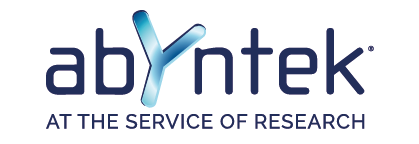Fungi play a crucial role in various ecosystems, contributing to nutrient cycling and decomposition processes. Understanding the diversity and dynamics of fungal populations is essential for comprehending their ecological functions and impacts on ecosystems. Traditional methods of studying fungal populations have limitations in accurately capturing the full scope of fungal diversity. However, recent advancements in DNA sequencing technologies have revolutionized the field of mycology, allowing for more comprehensive and precise analysis of fungal communities.
By sequencing specific genes within fungi, researchers can gain insights into the genetic composition, distribution, and interactions of fungal populations in different environments. This study aims to explore the potential applications and implications of gene sequencing in elucidating the complexities of fungal populations.
Importance Of Sequencing Fungal Genes For Population Studies
Sequencing fungal genes plays a crucial role in understanding the diversity and dynamics of fungal populations. By analyzing the genetic makeup of different fungal species within a population, researchers can identify key genetic variations that contribute to their adaptation, evolution, and interactions with other organisms. This information is essential for studying the ecological roles of fungi in various ecosystems, as well as for developing strategies to manage fungal diseases in agriculture and medicine.
Additionally, sequencing allows for the identification of novel species and strains, helping to expand our knowledge of fungal biodiversity. Overall, sequencing fungal genes provides valuable insights into the complex relationships within fungal populations and their impact on the environment.
Methods And Techniques For Sequencing Fungal Genes
The study of fungal populations through gene sequencing involves various methods and techniques to accurately analyze the genetic composition of these organisms. One common approach is to extract DNA from fungal samples and amplify specific gene regions using polymerase chain reaction (PCR). Next-generation sequencing technologies such as Illumina or PacBio are then used to sequence the amplified DNA fragments. Bioinformatics tools are employed to assemble, annotate, and analyze the sequencing data, allowing researchers to identify different fungal species present in a given sample.
Additionally, phylogenetic analysis can be performed to understand the evolutionary relationships between different fungal populations based on their gene sequences.
How does the process typically work?
1. Sample Collection: Samples are collected from the environment or organism of interest, such as soil, plant tissues, air, or clinical specimens.
2. DNA Extraction: Fungal DNA is extracted from the collected samples. Various methods can be employed depending on the sample type and downstream applications.
3. PCR Amplification: Polymerase Chain Reaction (PCR) is used to amplify the ITS region from the extracted DNA. PCR primers targeting conserved regions flanking the ITS1 and ITS2 regions are typically used. These primers are designed to be broad-spectrum to capture a wide range of fungal taxa.
4. Sequencing: The amplified DNA fragments are then sequenced using high-throughput sequencing platforms such as Illumina. This generates millions of short DNA sequences or ‘reads’.
5. Data Analysis:
- Quality Control: Raw sequencing data undergoes quality control to remove low-quality reads and sequencing artifacts.
- Sequence Alignment: The remaining reads are aligned to a reference database of fungal ITS sequences. This allows for the identification of similar sequences and taxonomic classification of the fungi present in the sample.
- Operational Taxonomic Unit (OTU) Clustering: Similar sequences are clustered into OTUs based on a defined sequence similarity threshold, often around 97%. Each OTU represents a group of closely related fungal taxa.
- Taxonomic Assignment: OTUs are then taxonomically assigned based on their similarity to known sequences in reference databases such as UNITE or NCBI.
6. Statistical Analysis: Various statistical methods are applied to analyze and interpret the sequencing data, including alpha diversity (diversity within a sample) and beta diversity (diversity between samples). These analyses provide insights into the composition, diversity, and structure of fungal communities in different environments.
7. Interpretation: The results are interpreted in the context of the research question or hypothesis. This could involve identifying key fungal taxa associated with specific environmental conditions, host organisms, or experimental treatments.
Analysis And Interpretation Of Data From Fungal Gene Sequencing
The analysis and interpretation of data from fungal gene sequencing is a crucial step in understanding the diversity and dynamics of fungal populations. By examining the genetic information obtained through sequencing, researchers can identify different species present, determine their abundance, and study their genetic relationships. This information allows for the identification of potential pathogens, symbiotic interactions, and environmental factors influencing fungal populations.
Additionally, analyzing gene sequences can provide insights into evolutionary patterns and adaptation strategies employed by fungi. Through careful interpretation of this data, researchers can uncover valuable insights into the ecological roles of fungi and their impact on various ecosystems.
Applications And Future Directions Of Studying Fungal Populations By Gene Sequencing
The study of fungal populations through gene sequencing has numerous applications and promising future directions. By understanding the genetic diversity within fungal communities, researchers can gain insights into their ecological roles, interactions with other organisms, and potential for biotechnological applications. This information can also inform strategies for managing fungal pathogens in agriculture, forestry, and human health. Furthermore, gene sequencing allows for the identification of novel fungal species and the discovery of new bioactive compounds with pharmaceutical potential.
In the future, advancements in sequencing technologies will enable more comprehensive analyses of fungal populations at larger scales and higher resolutions, further expanding our knowledge of these important organisms.




